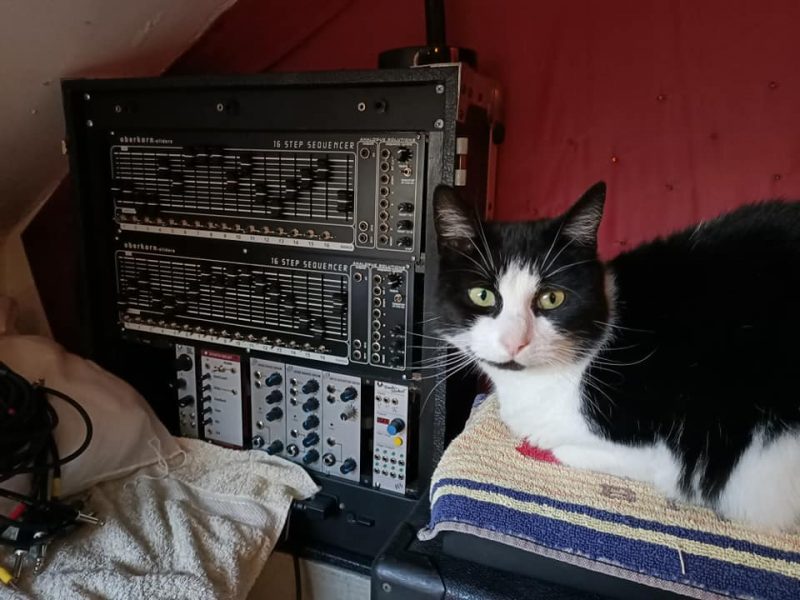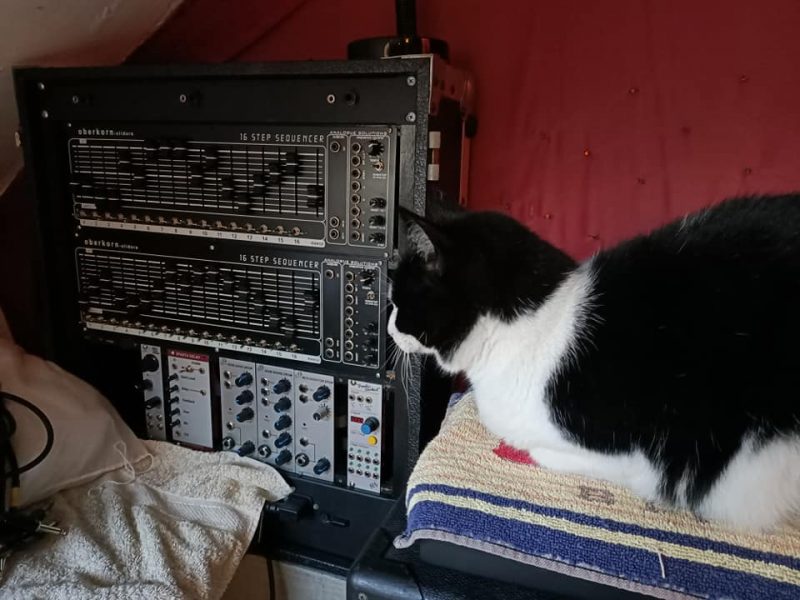Ringer creates a soundscape with the Waldorf Blofeld. Submitted by our good friend Damien Olsen.
We also see a Line 6 delay pedal, Korg M50 and TR61 keyboard synthesizers, a Roland SP-404 SX sampler, and more.

Ringer creates a soundscape with the Waldorf Blofeld. Submitted by our good friend Damien Olsen.
We also see a Line 6 delay pedal, Korg M50 and TR61 keyboard synthesizers, a Roland SP-404 SX sampler, and more.
This is the sweetest thing! The lovely Bella creates a drone on the Montage M7 while she relaxes. Her drone is a musical contribution to a larger composition and performance. From our friends I Love Cats and Synths on YouTube.
My best guess on the keyboard model is a Yamaha PSR, but if you know, please let us know in the comments below.

Pinki shows off a cool Analog Systems modular, with not one but two Oberkorn 16-step sequencers. There are several other Eurorack modules from other manufacturers on the lower level, which we shall leave as an exercise to the reader.

From our friend Edda Jayne via Facebook. You can see Pinki’s previous appearances via his tag

Our most recent video, “Beauty and the Beast”, explored the surprising and fascinating collaboration between Debbie Harry (of Blondie) and horror-surrealist artist H.R. Giger, perhaps best known for his work on the alien in the Alien films.
It got me thinking about the “beauty” in general. I think of beauty as one of my core values, along with curiosity, and these permeate what I choose to share with the world in my music, in videos, even perhaps in writing. Beauty comes in many forms beyond what we conventionally think of with the word. I find it in the faces of my cats, modernist art and architecture, the music I listen to, and yes, sometimes even in fashion magazines marketing “conventional beauty”.
It “arrests the mind”, to use James Joyce’s term from A Portrait of the Artist as a Young Man, specifically in a way that pushes away other thoughts and emotions and leaves one with positive focus, even if just for a fleeting moment. To bring it back to H.R. Giger for a moment, there is a beauty in some of his work, even as it remains deeply unsettling. The image that I used as the backdrop in the video, which was taken from the set of the KooKoo music videos, would be an example. It reminded me of the bodies of woodwind instruments (clarinets, bassoons, etc.).

Beauty’s counterpart for me is curiosity. Always being curious about things, exploring, and sharing what I find with others. Sometimes the reward for curiosity is beauty. This is something I try to bring across in my math videos, like the recent Henon Map video.
One does not need mathematical expertise, just curiosity and openness to it, rather than a pat dismissal of “oh, math is too hard,” and the imagination to see where it might go. For the Henon Map, the reward is indeed the beauty of the three-dimensional map, an unreal terrain.

This is even at play in the highway videos, where music and curiosity come together as we follow the road wherever it might lead.
But highways are really a story for another time.
If you enjoy these Sunday posts, please come back here for more. You can also subscribe to these newsletters on Substack.